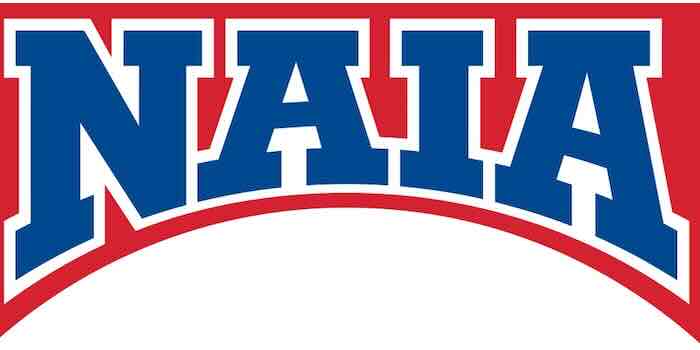By Milt Harris ——Bio and Archives--April 10, 2024
American Politics, News | CFP Comments | Reader Friendly | Subscribe | Email Us

The National Association of Intercollegiate Athletics (NAIA) is the governing body for most small colleges. On Monday, they announced a common-sense policy that bans biological males from competing in women's sports. The NAIA Council of Presidents voted on the issue, and it was an unanimous 20-0 vote. This move is believed to be the first of its kind among collegiate sports organizations.

Are you listening NCAA?
The transgender participation policy permits all athletes to take part in NAIA-sponsored male sports. However, only athletes who were assigned female at birth and have not undergone any hormone therapy are allowed to participate in women's sports.
If a student has started hormone therapy, they are allowed to take part in workouts, practices, and team activities, but they cannot compete in interscholastic competitions. However, NAIA programs that have historically included male students, such as competitive cheer or dance, are open to all students regardless of their gender identity.
The NAIA policy identifies that all other sports “includes some combination of strength, speed and stamina, providing competitive advantages for male student-athletes.” Therefore, participation in women’s sports represents an unfair biological advantage for transgenders who are participating in that sport.
NAIA's President and CEO, Jim Carr, has acknowledged that the decision to maintain a competitive balance in men's and women's sports will cause some controversy. However, he believes it is the best solution and understands the importance of it. Carr made this statement to the Associated Press:
The NAIA has made a significant improvement to its policy by implementing this responsible change. It has eliminated the confusing and nonsensical policy that differentiated between regular season and post-season participation. The previous policy did not prohibit transgender and nonbinary athletes from competing in the division of their choice during the regular season. However, during the postseason, athletes had to compete in the division of their birth sex, with a few exceptions for those who had undergone hormone therapy.
Not surprisingly, woke liberals such as Shiwali Patel, senior counsel at the National Women’s Law Center, stated that her organization was incensed by the policy change.
Support Canada Free Press

The NCAA seems to be ignoring the practical reasons for segregating men's and women's sports, and instead relies on the Title IX law, which contradicts their stance. In response to the NAIA's decision, the NCAA released a statement which appears to be confusing and illogical.
It is worth noting that 24 states in the US have laws that prohibit transgender women and girls from participating in certain women's or girls' sports competitions. Recently, a group of over a dozen current and former college athletes filed a federal lawsuit against the NCAA, a governing body for over 500,000 athletes, claiming that the organization has violated their rights by allowing transgender women to compete in women's sports.
Kasey Havekost is a former Division I athlete who is now a higher education attorney at Bricker Graydon. She described the situation this way:
Carr found it important to mention that out of the 241 schools in the NAIA, approximately 190 are privately owned, and around 125 of those have some kind of religious association. Furthermore, among the 20 presidents who cast their votes, 17 are associated with Christian denominations.
Patel, representing the leftist side of the political spectrum, is blind to the idea of fairness on the issue of the NAIA ban and certain state bans, according to her statement.

In the United States, there are approximately 15.3 million high school students who attend public schools. Among this group, a 2019 study conducted by the Centers for Disease Control and Prevention (CDC) estimated that about 1.8%, or roughly 275,000 students, identify as transgender. Out of this number, only a small percentage participate in sports. According to a 2017 survey conducted by the Human Rights Campaign, fewer than 15% of transgender boys and girls reported playing sports.
If these percentages are correct, it indicates that 41,250 transgender women seek to participate in women's sports. This suggests that there are 41,250 opportunities for biological women to be unfairly deprived of participating in or potentially winning a deserved title in their sport. A recent example of this issue occurred when a 6'3" man who identifies as "Rose" won a championship on a girls' high school track and field team in Connecticut. Additionally, he has been granted access to the girls' locker room, causing girls to feel unsafe.
The NCAA and liberals fail to acknowledge the reality that there are no transgender men competing in men's sports, which highlights the fundamental differences in sports competition between men and women.
The NCAA needs to acknowledge the fact that men and women have different physical capabilities. Allowing men to participate in women's sports gives transgender athletes an unfair advantage, which is not fair to biological women. This goes against the idea of inclusion and instead, leads to exclusion and discrimination against women in sports.
View Comments
Milt spent thirty years as a sales and operations manager for an international manufacturing company. He is also a four-time published author on a variety of subjects. Now, he spends most of his time researching and writing about conservative politics and liberal folly.